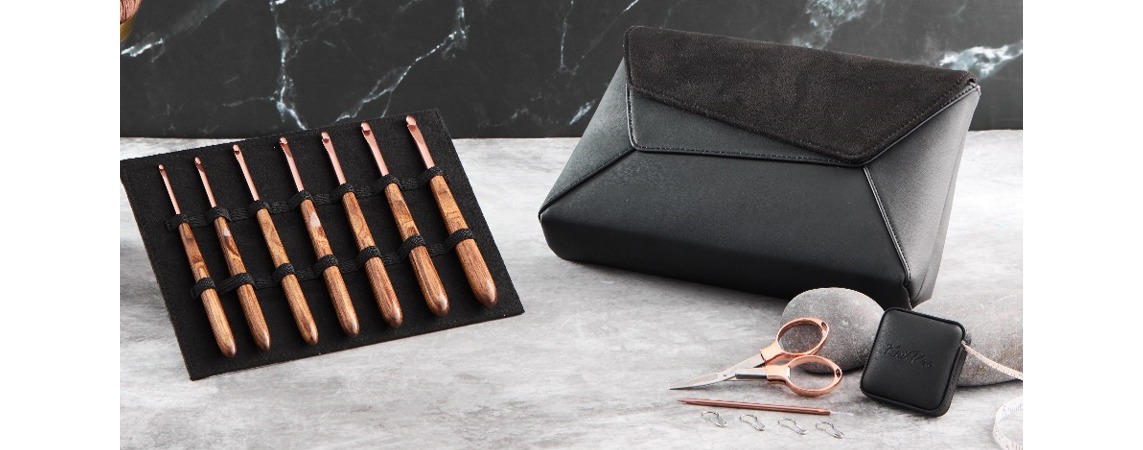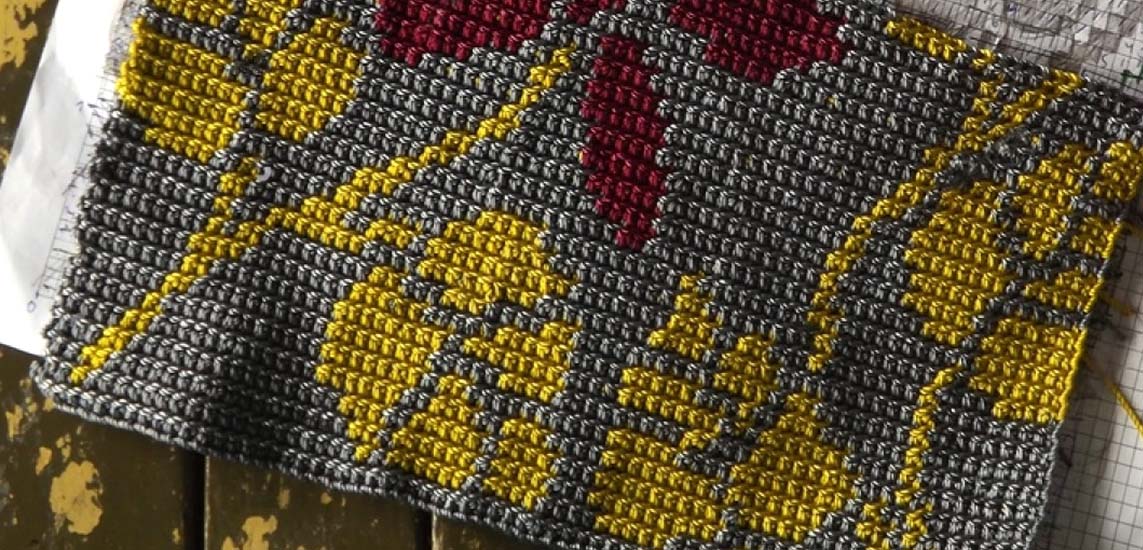Tapestry Crochet is one of the oldest colourwork techniques in crochet. You need to work with two or more strands of yarn of different colours with any of your crochet hooks. Though the crocheting technique looks intimidating, it only requires basic crochet stitches and multiple yarn changes. The trick to the colourwork method is to carry the yarns along your stitches, though it does leave you with numerous yarn ends to weave in later. With Tapestry crochet, you can create a reversible fabric with intricate patterns, bold motifs, and striking colour contrasts inspired by traditional tapestries and woven textiles. To learn more about the artwork, we'll walk you through its history, technique, and step-by-step instructions in this blog.
Essentials for Tapestry Crochet

Choosing Crochet Hooks & Yarn: This technique requires any single-ended crochet hook matching the yarn weight. If you own a Tunisian crochet with an interchangeable cable, you can use the colourwork method, but don’t attach the cable to the hook. You may need to work with two or more yarns, so choose fibers that complement each other.
Basic Crochet Stitches: Tapestry crochet can be worked with basic crochet stitches. You work with a double crochet stitch (known as a single crochet stitch in US patterns). However, many patterns also call for treble or half-treble crochet stitches (known as double or half-double stitches in US patterns). As the colourwork crocheting technique requires creating a dense fabric, short stitches are preferred, so taller stitches are rarely asked.
Colour Changes: The method of changing colours in crochet is fairly easy without asking too much. You simply change the yarn while completing one stitch and starting with a new one. Ensure that you prevent gaps in your work, or the yarn will peek through. Our guide on how to change colours in crochet will assist you. As changing colours is the most important task in the crocheting technique, it is very important to keep a close eye on the changes, taking into account the tension during these transitions.
Carrying Yarn: Tapestry crochet requires you to carry yarn along the stitches before it's needed again. Maintaining consistent tension is crucial in this technique. If your stitches are too tight, they will distort, and the fabric will pucker, losing its clarity. Loose tension will result in unclear designs, allowing different yarn colours to peek through. It is important to practice to get the right balance.
Reading Charts: As you advance in crochet work, moving on from basic patterns, you need to learn to read charts. Pattern designers do not use written texts for instructions but represent them with charts or graphs. If you are new to crocheting, you can still learn to read charts. Charts or grapes are shown as grids or squares. Each square on the chart represents a stitch. You will simply work double crochet stitches and when you need to change colours, the box will be shown in a different shade.
Here’s a quick tutorial to crochet a dishcloth to get you started.
Materials Needed:
- Worsted weight yarn in two contrasting colours (Main Color - MC and Contrasting Color - CC)
- Use a crochet hook appropriate for your yarn (size H/8 or 5.0mm recommended). You can also use an interchangeable Tunisian or double-ended crochet hook of the same size.
- A pair of scissors
- Wool needle
Pattern:
Making the Foundation:
Using your main color (MC) yarn, create a slip knot and chain 31 stitches. This will serve as the foundation chain for your dishcloth.
Row 1
Double crochet ( single crochet stitch in US patterns) in the second chain from the hook. Double crochet in each chain across the row. (30 stitches)
Row 2
Chain 1 (does not count as a stitch). Double crochet in each stitch across the row, working in both loops of each stitch. (30 stitches)
Colorwork Section:
Row 3 (Right Side):
Switch to your contrasting color (CC) yarn. Before beginning the row, hold the MC yarn along the top of the previous row and crochet over it to incorporate it into your work. Double crochet in each stitch across the row, working over the MC yarn. (30 stitches)
Row 4 (Wrong Side):
Switch back to your main color (MC) yarn. Hold the CC yarn along the top of the previous row and crochet over it to incorporate it into your work. Double crochet in each stitch across the row, working over the CC yarn. (30 stitches)
Repeat Rows 3 and 4:
Continue alternating between rows of CC and MC, working over the unused yarn and carrying it along the back of your work, until your dishcloth measures approximately 7 inches in length or until you reach your desired size.
Finishing:
Once you've completed the colorwork section, cut both yarns, leaving a tail of a few inches. Fasten off and weave in the ends using a wool needle, making sure to secure them neatly on the wrong side of the dishcloth.
Tapestry crochet is captivating, offering endless creative possibilities! Whether you are a beginner or a seasoned maker, tapestry crochet opens the door to a world of colourful expression. So, gather your tools and delve into the captivating art of tapestry crochet. KnitPro assists you in your crafting journey with an incredible range of knitting needles, crochet hooks and sets. Serving the demands of a crocheter, each of our crochet hook sets is ideal for crafting sessions.












